Results 10,301 to 10,310 of 12096
Thread: Anandtech News
-
02-03-20, 02:39 PM #10301
Anandtech: 96-Layer 3D TLC Reaches Embedded & Industrial NVMe SSDs: Transcend Reveals
Though, as always, it takes some time for newer technologies to filter down into the conservative embedded/industrial market, the time has finally come for 96-layer 3D TLC NAND. SSD maker Transcend recently introduced its high-performance MTE662T SSD, one of the world’s first 96-layer 3D TLC-based NVMe drives aimed at commercial and industrial environments. And with sequential read speeds of up to 3400 MB/s, the drive is among the fastest in the segment.
When it comes to SSDs for applications that work 24/7 and/or in harsh environments, predictability and reliability are two things that matter the most, so the devices use appropriate components, are tailored for a particular use case, and have to pass rigorous tests. Transcend’s MTE662T M.2-2280 SSD is designed for embedded or ‘mild’ industrial applications, so it can handle operating temperatures between 0ºC and 70ºC for prolonged periods, can survive 5% ~ 95% RH non-condensing humidity, and endure 2.17 G (peak to peak) vibration with a 10 Hz ~ 700 Hz frequency.
The Transcend MTE662T carries 256 GB, 512 GB or 1 TB of 96-layer 3D TLC BiCS4 memory from Toshiba. The SSD is controlled by by an undisclosed high-end controller with eight NAND channels that supports NVMe 1.3 feature set, an LDPC-based ECC as well as DRAM caching. As far as performance is concerned, the drive promises up to 3400 MB/s sequential read speeds, up to 2300 MB/s sequential write speeds (when pSLC cache is used), as well as a peak read/write random IOPS rating of 340K/355K.
When it comes to endurance and reliability levels, Transcend’s MTE662T SSDs can handle from 550 TB to 2,200 TB written over a three-year warranty period, depending on the drive's capacity. This is not a particularly high rating, but far not all embedded and commercial applications are write intensive. As for MTBF, Transcend has rated the drive for 3,000,000 hours.
Transcend will start sales of the MTE662T SSD in February. Exact prices will depend on the volume ordered and other factors.Transcend's MTE662T SSDs Capacity 256 GB 512 GB 1 TB Model Number ? TS512GMTE662T TS1TMTE662T Controller Unknown
8 NAND channels
NVMe 1.3
LDPCNAND Flash 96-Layer BiCS4 3D TLC NAND Form-Factor, Interface, Protocol M.2-2280, PCIe 3.0 x4, NVMe 1.3 Sequential Read 3200 MB/s 3400 MB/s 3400 MB/s Sequential Write 1300 MB/s 2300 MB/s 1800 MB/s Random Read IOPS 190K IOPS 340K IOPS 305K IOPS Random Write IOPS 320K IOPS 355K IOPS 350K IOPS Pseudo-SLC Caching Supported DRAM Buffer Yes, capacity unknown TCG Opal Encryption ? Power Consumption Sleep: 1 W
Operation: 3.3 WOperating Temperature 0°C (32°F) ~ 70°C (158°F) Storage Temperature -40°C (-40°F) ~ 85°C (185°F) Humidity 5% ~ 95% RH, non condensing Shock 1500 G, 0.5 ms, 3 axis Operating Vibration 2.17 G (peak-to-peak), 10 Hz ~ 700 Hz (frequency) Warranty 3 years MTBF 3,000,000 hours TBW 550 TB 1,100 TB 2,200 TB DPWD ~2 MSRP ? ? ?
Related Reading:
- Transcend Launches New PCIe M.2 SSDs: The MTE850 Series
- Transcend Introduces Extreme Temperature DDR4 SO-DIMMs
- ADATA Launches ISSS314 and IM2P3388 Industrial SSDs: 3D NAND, Extreme Temps
- Transcend Announces SuperMLC: Pseudo-SLC SSDs For Industrial Market
Source: Transcend (via Hermitage Akihabara)
More...
-
02-03-20, 04:54 PM #10302
Anandtech: TCL Loses Brand License, Will No Longer Produce BlackBerry Devices
Today, TCL Communications has revealed that the company will be losing their BlackBerry brand license, and will stop selling such devices this August. The announcement is a bit of a shock, and what this actually means for the BlackBerry brand as well as BB mobile devices is currently still unclear.
BlackBerry phones under TCL had seen a resurgence over the last few years, and one would have assumed the partnership was successful. Whether BlackBerry will be partnering with a different OEM to continue making devices, or if this will be the end of BB devices is something we currently don’t know.
The full announcement:
When TCL Communication announced in December 2016 that we had entered into a brand licensing and technology support agreement with BlackBerry Limited to continue making new, modern BlackBerry smartphones available globally we were very excited and humbled to take on this challenge. Indeed, our KEY Series smartphones, starting with KEYone, were highly-anticipated by the BlackBerry community. What made these devices great wasn’t just the hardware developed and manufactured by TCL Communication, but also the critical security and software features provided by BlackBerry Limited to ensure these were genuine BlackBerry devices. The support of BlackBerry Limited was an essential element to bringing devices like BlackBerry KEYone, Motion, KEY2 and KEY2 LE to life and we’re proud to have partnered with them these past few years on those products.
We do regret to share however that as of August 31, 2020, TCL Communication will no longer be selling BlackBerry-branded mobile devices. TCL Communication will continue to provide support for the existing portfolio of mobile devices including customer service and warranty service until August 31, 2022 – or for as long as required by local laws where mobile device was purchased. Further details can be found at www.blackberrymobile.com or by phoning customer support at the numbers found at https://blackberrymobile.com/hotline...ervice-center/ .
For those of us at TCL Communication who were blessed enough to work on BlackBerry Mobile, we want to thank all our partners, customers and the BlackBerry fan community for their support over these past few years. We are grateful to have had the opportunity to meet so many fans from all over the world during our world tour stops. The future is bright for both TCL Communication and BlackBerry Limited, and we hope you’ll continue to support both as we move ahead on our respective paths.
From everyone who worked on the BlackBerry Mobile team at TCL Communication over the years, we want to say ‘Thank You’ for allowing us to be part of this journey.
As for TCL, the company is ramping up their own TCL-branded range of devices that seem to be extremely competitive in their capabilities and designs. Whilst it’s a loss for the company, I’m sure their own brand devices will be successful enough on their own – although we’ll be missing the classical BlackBerry devices with their characteristic physical keyboards.
Related Reading:- BlackBerry Launch Special Edition Key2 in Red
- BlackBerry Key2 LE: A Competitive Android Offering
- BlackBerry Launches KEYone Black Edition: All-Black, 4 GB of RAM, 64 GB NAND
- BlackBerry KEYOne Announced: Snapdragon 625 with QWERTY, $549
- BlackBerry Stops Development of Smartphones, Set to Outsource Hardware Development
More...
-
02-03-20, 07:27 PM #10303
Anandtech: JEDEC Updates HBM2 Memory Standard To 3.2 Gbps; Samsung's Flashbolt Memory
After a series of piecemeal announcements from different hardware vendors over the past year, the future of High Bandwidth Memory 2 (HBM2) is finally coming into focus. Continuing the industry’s ongoing momentum with HBM2 technology, late last month JEDEC published an updated revision of the HBM2 standard. The updated standard added support for even faster memory speeds of up to 3.2Gbps/pin, and in the process pushed the fastest speed for a complete stack of HBM2 memory to 410GB/sec. Meanwhile the memory manufacturers themselves have been preparing for this moment for a while, and Samsung has put out their own matching announcement regarding their Flashbolt HBM2 memory.
First and foremost, let’s dive into the latest version of the HBM2 standard. JESD235C, as it’s officially called, is a relatively small update to the HBM2 standard. After introducing more sizable changes a couple of years back with 12-Hi memory stacks, expanding both the speed and capacity of HBM2 memory, the latest revision is a more measured update focusing on performance.
The biggest change here is that the HBM2 standard has officially added support for two higher data rates, bringing 2.8Gbps/pin and 3.2Gbps/pin into the standard. Coming from the previous standard’s maximum rate of 2.4Gbps/pin, this represents an up-to 33% increase in memory bandwidth in the case of 3.2Gbps HBM2. Or to put this in more practical numbers, a single stack of 3.2Gbps HBM2 will deliver 410GB/sec of bandwidth, up from 307GB/sec in the last standard. Which for a modern, high-end processor supporting 4 stacks (4096-bit) of memory, this brings the aggregate bandwidth available to a whopping 1.64 TB/sec.
All told, this latest update keeps even a single stack of HBM2 quite competitive on the bandwidth front. For comparison’s sake, a 256-bit GDDR6 memory bus with 14Gbps memory can reach 448GB/sec of aggregate bandwidth; so a single stack of HBM2 only slightly trails that. And, of course, HBM2 can scale up to a larger number of stacks more easily than GDDR6 can scale up in bus width, keeping larger HBM2 topologies well ahead of discrete GDDR6 memory chips as far as bandwidth is concerned.HBM2 Memory Generations JESD235C JESD235B JESD235A Max Bandwidth Per Pin 3.2 Gb/s 2.4 Gb/s 2 Gb/s Max Die Capacity 2 GB 2 GB 1 GB Max Dies Per Stack 12 12 8 Max Capacity Per Stack 24 GB 24 GB 8 GB Max Bandwidth Per Stack 410 GB/s 307.2 GB/s 256 GB/s Effective Bus Width (1 Stack) 1024-bit Voltage 1.2 V 1.2 V 1.35 V
The trade-off, as always, is cost and capacity. HBM2 remains a premium memory technology – due in part to the complexities involved in TSVs and die stacking, and in part to manufacturer product segmentation – and there aren’t currently any signs that this will change. Meanwhile the latest HBM2 standard does not increase memory capacities at all – either through density or larger stacks – so the maximum size of a single stack remains 24GB, allowing a 4 stack configuration to pack up to 96GB of memory.
Meanwhile, it’s interesting to note that as of JESD235C, JEDEC has backed off just a bit with regards to standardizing HBM2 die stack dimensions. In the previous version of the standard, the dimensions for 12-Hi stacks were listed as “TBD”, but for the new revision the group has seemingly punted on any standardization whatsoever. As a result, there isn’t a single standard height for 12-Hi stacks, leaving it up to memory manufacturers to set their own heights, and for customers to accommodate any differences between the manufacturers.
It is also worth noting that while the HBM2 standard doesn’t directly impose power limits on its own, the standard does specify regular operating voltages. HBM2 since its inception has operated at 1.2V, and the latest standard has not changed this. So the faster memory speeds should come with little (if any) increase in power consumption, as they won’t require higher voltages to drive them.
Finally, it looks like JEDEC has passed on formally adopting the “HBM2E” moniker for the latest memory standard. In pre-standard technology announcements from Samsung, SK Hynix, and others, all of these groups referred to the memory as HBM2E. And indeed, Samsung still is. However this appears to be an entirely informal arrangement, as the official wording on both the JEDEC’s page as well as in the standard itself continue to refer to the memory as HBM2. So it is almost guaranteed that we’re going to see the two terms thrown around interchangeably over the next couple of years.
Samsung Flashbolt Memory Update: Volume Production In H1’2020
Following the HBM2 standard update, Samsung this afternoon has also issued its own announcement offering an update on the status of their third-generation Flashbolt HBM2E memory. Samsung was the first company to release information on the new speeds, announcing Flashbolt almost a year ago during NVIDIA’s 2019 GPU Technology Conference. At the time Samsung’s announcement was still preliminary, and the company wasn’t saying when they would actually go into mass production. But now we finally have our answer: the first half of this year.
Given that almost a year has passed since the original Flashbolt announcement, Samsung’s announcement is as much a reminder that Flashbolt exists as it is a proper update. Still, today’s announcement offers a bit more detail than Samsung’s relatively high-level reveal last year.
Of particular note, Samsung is only announcement 16GB stacks at this time, built using 2GB dies stacked in an 8-Hi configuration. And while this doesn’t preclude Samsung eventually going to 12-Hi, 24GB stacks in the future, it isn’t where the company is going to start at. The memory dies themselves are being manufactured on Samsung’s 1y process technology.Samsung HBM2 Memory Comparison Flashbolt Aquabolt Flarebolt Total Capacity 16 GB 8 GB 8 GB 4 GB 8 GB 4 GB Bandwidth Per Pin 3.2 Gb/s
(4.2 Gb/s OC)2.4 Gb/s 2 Gb/s 2 Gb/s 1.6 Gb/s 1.6 Gb/s Number of DRAM ICs per Stack 8 8 8 4 8 4 DRAM IC Process Technology 1y 20 nm Effective Bus Width 1024-bit Voltage 1.2 V? 1.2 V 1.35 V 1.2 V Bandwidth per Stack 410 GB/s
(538 GB/s OC)307.2 GB/s 256 GB/s 204.8 GB/s
Meanwhile, Samsung appears to be setting some ambitious targets for data rates for Flashbolt. Along with supporting the new 3.2Gbps HBM2 standard, Samsung claims that they are able to go out of spec with Flashbolt, taking the memory to an even speedier 4.2Gbps. This would be a further 31% data rate increase over 3.2Gbps HBM2, and it would push the bandwidth available in a single stack to 538GB/sec, or better than half a terabyte a second. The key word here, of course, is “out of spec”; it’s not clear whether there are any HBM2 memory controllers that will be able to keep up with Samsung’s data rates, and of course there’s the question of power consumption. So while it’s all but guaranteed that Samsung has customers lined up to use Flashbolt at 3.2Gbps, it will be interesting to see whether we see any kind of high-volume products ship at data rates higher than that.
Overall, this makes Samsung the second vendor to announce out of spec HBM2 memory. Last year SK Hynix announced their own HBM2E effort, which is expected to reach 3.6Gbps. So whatever happens, it would seem we’ll now have multiple vendors shipping HBM2E memory rated to go faster than the brand-new 3.2Gbps spec.
More...
-
02-03-20, 09:35 PM #10304
Anandtech: Intel Whittles Down AI Portfolio, Folds Nervana in Favor of Habana
Over the past several years, Intel has built up a significant portfolio of AI acceleration technologies. This includes everything from in-house developments like Intel’s DL Boost instructions and upcoming GPUs, to third party acquisitions like Nervana, Movidius, and most recently, Habana labs. With so many different efforts going on it could be argued that Intel was a little too fractured, and it would seem that the company has come to the same conclusion. Revealed quietly on Friday, Intel will be wrapping up its efforts with Nervana’s accelerator technology in order to focus on Habana Labs’ tech.
Originally acquired by Intel in 2016, Nervana was in the process of developing a pair of accelerators for Intel. These included the “Spring Hill” NNP-I inference accelerator, and the “Spring Crest” NNP-T training accelerator. Aimed at different markets, the NNP-I was Intel’s first in-house dedicated inference accelerator, using a mix of Intel Sunny Cove CPU cores and Nervana compute engines. Meanwhile NNP-T would be the bigger beast, a 24 tensor processor chip with over 27 billion transistors.
But, as first broken by Karl Freund of Moore Insights, Spring won’t be arriving after all. As of last Friday, Intel has decided to wrap up their development of Nervana’s processors. Development of NNP-T has been canceled entirely. Meanwhile, as NNP-I is a bit further along and already has customer commitments, that chip will be delivered and supported by Intel for their already committed customers.
In place of their Nervana efforts, Intel will be expanding their efforts on a more recent acquisition: Habana Labs. Picked up by Intel just two months ago, Habana is an independent business unit that has already been working on their own AI processors, Goya and Gaudi. Like Nervana’s designs, these are intended to be high performance processors for inference and training. And with hardware already up and running, Habana has already turned in some interesting results on the first release of the MLPerf inference benchmark.
In a statement issued to CRN, Intel told the site that "Habana product line offers the strong, strategic advantage of a unified, highly-programmable architecture for both inference and training," and that "By moving to a single hardware architecture and software stack for data center AI acceleration, our engineering teams can join forces and focus on delivering more innovation, faster to our customers."
Large companies running multiple, competitive projects to determine a winner is not unheard of, especially for early-generation products. But in Intel’s case this is complicated by the fact that they’ve owned Nervana for a lot longer than they’ve owned Habana. It’s telling, perhaps, that Nervana’s NNP-T accelerator, which had never been delivered, was increasingly looking last-generation with respect to manufacturing: the chip was to be built on TSMC’s 16nm+ process and used 2.4Gbps HBM2 memory at a time when competitors are getting ready to tap TSMC’s 7nm process as well as newer 3.2Gbps HBM2 memory.
According to CRN, analysts have been questioning the fate of Nervana for a while now, especially as the Habana acquisition created a lot of overlap. Ultimately, no matter the order in which things have occurred, Intel has made it clear that it’s going to be Habana and GPU technologies backing their high-end accelerators going forward, rather than Nervana’s tech.
As for what this means for Intel’s other AI projects, this remains to be seen. But as the only other dedicated AI silicon comes out of Intel’s edge-focused Movidius group, it goes without saying that Movidius is focused on a much different market than Habana or the GPU makers of the world that Intel is looking to compete with at the high-end. So even with multiple AI groups still in-house, Intel isn’t necessarily on a path to further consolidation.
More...
-
02-04-20, 10:25 AM #10305
Anandtech: Enterprise SATA SSDs: Can Budget 2020 beat Top Line 2017?
Today we're looking at two wildly different enterprise SATA SSDs: the Kingston DC450R entry-level server SSD with the latest controller and 96L 3D NAND, and the Micron 5100 MAX that was top of the line two generations ago.
More...
-
02-04-20, 02:41 PM #10306
Anandtech: Computex 2020: Still on Schedule Despite Coronavirus, But Other Events Hav
Here at AnandTech, our two biggest PC technology trade shows of the year are CES and Computex. We could argue until the end of time which is more important, however with the recent outbreak of Coronavirus (2019-nCoV) in China and small cases around the world, there has been some discussion among the press if Computex, held in Taiwan, will be delayed. We have received a latest update from TAITRA, the company that organizes Computex, which states that the event is still on schedule; however other events closer to today currently have restrictions.
Computex 2003: SARS
The SARS outbreak of 2003 started in November 2002, and originated in the Guangdong province of China which borders Hong Kong. The epidemic had a final tally of 8098 cases and 774 deaths, making it very serious. Taiwan had 346 cases, with the World Health Organisation declaring Taiwan SARS-free on July 2003.
Due to the severity of the virus, TAITRA moved Computex from its usual position of early June (for 2003 it was 2nd-6th) into late September (22nd-26th). The delay announcement was made on 30th April 2003, although no date was attached at the time – the announcement was made with the assistance of a poll of already registered attendees, 1148 were polled with a 92% response rate. According to reports, 59% of attendees said they wanted to see the show postponed. Eventually the September date was chosen.
Computex 2020: 2019-nCoV
The 2019 Coronavirus outbreak started in December 2019, in the Wuhan province of north China. As of the 4th February, there are 20704 confirmed cases (20492 of which are in China), 427 deaths, and 727 recoveries. Several cities in China are still on lockdown, and in the tech world, Foxconn recently announced that it will keep its factories closed until at least February 10th, at least a week after the Chinese New Year annual holiday around this time. At present the 2019-nCoV is still a real threat, mostly contained in China, however almost a dozen countries are now also reporting at least 10 cases of the virus. Taiwan currently has 11 confirmed infections.
At present, TAITRA has started early registration for Computex 2020, which this year is still listed as scheduled for June 2nd-6th. An official news post was made on the 3rd February (yesterday), stating that the company is maintaining strict compliance with all health protocols, with the state ensuring that all visitors are undergoing thermal screening, and all medical facilities are equipped with detection and treatment rooms, regular emergency drills are taking place in medical facilities, and visitors from China are being put under heavy restrictions. It should be noted that Taiwan is often cited as having one of the best national health systems worldwide, and in the situation of an epidemic like 2019-nCoV, it is highly likely that there will be no fee to treatment for visitors due to the nature of the illness.
Unfortunately there was no mention directly of any changes to the event itself. We reached out to our contracts at Taitra, and received the following:
Taiwan has been paying close attention to the development of this virus from early on and is currently taking serious measures to reduce the damage it could make. I have attached a press statement from TAITRA related to another exhibition (TAIPEI CYCLE) which will take place in March. We have not received similar statements with regards to COMPUTEX, but I hope it answers your questions.The event mentioned in the statement, TAIPEI CYCLE, is an annual event with 8000 attendees and 1000 exhibitors – about an order of magnitude smaller than Computex. In that document, there are two key elements to it: no Chinese exhibitors or attendees/visitors will be allowed, and all people on-site must wear facemasks. The appropriate lines are as follows.
TAITRA, as show organizer, has decided to run the 2020 Taipei Cycle Show as scheduled from March 4 to March 7. Due to the outbreak of the New Coronavirus (2019-nCoV) in China, we feel very sorry to inform you that all the Chinese exhibitors and Chinese visitors will not be able to come to Taiwan to attend the show.At present we have almost 2.5x the number of confirmed cases of the Coronavirus compared to SARS in its entirety, however the mortality rate is currently lower and with these numbers in mind, the decision to disallow mainland Chinese participants at the Cycle event may propagate to Computex if the situation is similar in several months. Note, it would be very difficult to have a Computex with zero mainland Chinese presence. I suspect that any company that intends to show its hardware at Computex is going to have to ensure they have relevant demo units outside of China immediately.
TAITRA will implement the following measures in the prevention of this epidemic:
- All on-site personnel including outsourced contractors must wear face masks whilst on-site and on duty.
- Hand sanitizer to be available at each entrance and restroom of the exhibition halls, including staff and freight entrances.
- TAITRA will cooperate with the exhibition hall operators to strengthen all possible epidemic prevention measures.
- TAITRA will also ensure that we are working promptly in line with the national guidelines from Taiwan’s Center for Disease Control
Mobile World Congress 2020: In 3 Weeks
The next event on our calendar here at AnandTech is Mobile World Congress (MWC), the premier smartphone and mobile technology event on the calendar. This takes place in Barcelona, and we expect to have our Senior Smartphone Editor Andrei Frumusanu on the ground at the event. On January 31st, GSMA, the company that organizes the event, released a statement saying that the event will proceed as planned.
In the statement, GSMA also stated that it will be closely adhering to WHO recommendations, providing extra sanitation services especially in high-traffic areas such as hallways, handrails, bathrooms, and public touch screens, increased onsite medical support and medical notices, improved employee training on the matter, and closer booth-to-booth inspection for sanitary conditions. At present no attendees are restricted from the event, only by the local authority rules at ports of entry.
Computex 2020: Still on Schedule
Given the timeline of the SARS outbreak, we might expect closer to the time TAITRA start to distribute questionnaires to pre-registered attendees about their thoughts on the Coronavirus, depending on if it keeps spreading or if a relevant and quicker cure is found. As the situation develops, we will update this news post.
Sources: Wiki, Taitra via MSI (2003), CoV Dashboard, Taitra (2/3), Reuters, TAIPEI CYCLE, GSMA on MWC
Carousel Image from Taitra, Computex 2019
More...
-
02-04-20, 02:41 PM #10307
Anandtech: GeForce NOW Leaves Beta, Game Streaming Service Launches With New RTX Serv
For the last several years, NVIDIA has been dabbling in offering game streaming services. Starting out as GeForce GRID for the controller-shaped SHIELD Portable, the service has morphed over the years in scope and technology. The most recent iteration, GeForce NOW, a multi-platform service, was launched in beta back at the start of 2018. And now, a bit over two years later, NVIDIA is finally taking the service out of beta and is formally launching the commercial GeForce NOW service.
Trying out a number of different strategies over the years in various retoolings, NVIDIA has ultimately settled on an interesting, and for the moment at least, quite unique service offering for their game streaming service. Rather than going with a hybrid subscription model where customers would subscribe to a service, get some games, and get the option of buying more games on that service (ala Google Stadia or Playstation Now), NVIDIA has instead focused purely on providing the infrastructure and streaming services, but not the games. The net result is that GeForce NOW runs on a bring-your-own-games model, where NVIDIA rents out what’s essentially a virtual machine instance on their servers, and gamers can use their Steam/Uplay/Battle.Net/Epic accounts to play games they already own.
NVIDIA has been offering this modern version of the service since early 2018 in the form of a free, waitlisted beta, slowly testing the platform while building up both the number of games and the number of platforms the client is available on. As of today that beta is finally coming to an end, and the service is rolling out in commercial form. Besides the obvious changes of removing the waitlists and charging for it, the shift from a beta to a paid offering won’t radically change the service, but NVIDIA is using the launch to make a few tweaks
First and foremost, of course, is pricing. Surprisingly, NVIDIA is actually keeping around a free tier of the service – albeit with some restrictions – so there will be two tiers of service. The paid “Founders” tier is the full package, and includes access to NVIDIA’s new RTX servers. Notably there is a maximum session limit of 6 hours, but this seems to be focused more on preventing someone from leaving an instance running all day long with an unattended game than it is about discouraging heavy users.
For now, NVIDIA is seems a bit unsure about where to price the service at. The company is charging $4.99/month for the first 12 months, and to further sweeten the deal, the first three months are free. According to NVIDIA this is a limited time offer, implying that they’re going to be charging more than $4.99/month for regular (Premium) pricing later on, but they don’t seem to know what to charge for the service; so I imagine the subscription numbers they see over the next 12 months will help to decide that. At any rate, the company is launching with the capacity to support 600K simultaneous users, and depending on how the paid service goes, NVIDIA has a definite ambition to further expand that.
Meanwhile, NVIDIA is also keeping a free tier, albeit with much greater restrictions. The free tier has a maximum session length of just 1 hour, and of course, it’s first-come first-serve with free tier users sharing any leftover slots that aren’t already occupied by paying users. Free tier users also won’t have access to RTX features, though I’m curious how much of this is going to be software segmentation (i.e. turning them off), and how much of this is using their older Pascal-based servers for the free tier. At any rate, it’s a bit of a surprise to see the free tier offered even with these restrictions; because NVIDIA offers free-to-play games on GeForce NOW (including the uber popular Fortnite), it’ll be possible to use GeForce NOW without paying a dime for the service or for a game.
Otherwise, it’s worth noting that NVIDIA is being much more conservative about resolutions here. 4K streaming isn’t available for GeForce NOW, even on the paid tier. Instead the service tops out at 1080p60, with NVIDIA recommending a 50Mbps connection for best results. Some of this is going to be due to what the service is running under the hood (more on that in a second), and part of it is for pragmatic reasons: NVIDIA wants to put their best foot forward. And that means emphasizing image quality and things like ray tracing over a higher resolution.
Overall, NVIDIA is promising GeForce RTX 2080-like performance, which would be potent, but would fall short of being able to drive 4K at 60fps in a number of games. So rather than delivering 4K at uneven framerates – an issue that has been widely noted with some games on Google’s Stadia – NVIDIA is keeping things within the realm of what an RTX 2080 can do well.
Under the hood, NVIDIA is, as always, running GeForce NOW on top of Tesla video cards (Digital Foundry spotted both a P40 and a 16GB Tesla T10). For today’s launch the company has upgraded a number of servers to use the newer Turing-based Tesla cards, so today also marks the launch of the first RTX-capable instances on the service. As for how that hardware is being allocated, depending on the game, NVIDIA is either giving a user a whole GPU, or time slicing between two or four users. The most demanding games – mainly those using RTX effects – will get a whole GPU, while other games will get shared instances.
As for the available platforms, NVIDIA is launching with the same platforms as in the previous beta. This means the GeForce NOW client is available for Windows, macOS, and Android (including of course, NVIDIA’s own SHIELD). The company is also announcing that they’ll be bringing the client to Chromebooks, but that client isn’t ready quite yet.
The service availability is also largely unchanged from the beta. NVIDIA is running their own server clusters in North America and Western Europe, with nine sites in North America and six in Europe to try to keep latency down. Meanwhile NVIDIA has partnered with local service providers in Russia, Japan, and South Korea, who are offering their own services using the GeForce NOW technology.
All told, NVIDIA is launching the service with support for “1000+” games. Which is a lot of games, but admittedly a fraction of what’s available via the various gaming stores out there. Besides testing and certifying games to work well on the service, the other limiting factor here appears to be licensing. NVIDIA of course is going to be quite mum on the latter, but even though they aren’t operating a game store of their own, they still need to operate within the good graces of the publishers. Which for now, at least, doesn’t include EA or Rockstar.
Overall then, NVIDIA is launching their game streaming platform at an interesting time for the industry. While NVIDIA has been developing this platform for the better part of a decade, in many ways they find themselves in the unusual position of being the underdog. Google’s Stadia may be the new kid on the block, but backed by Google enormous muscle, it’s arguably the frontrunner by being the most visible. Meanwhile Sony already has their own service, and Microsoft is ramping up their service as well. Oh, and there’s the small bit about convincing gamers that streaming games – with all of the inherent latency – is still going to be a good way to play games.
For NVIDIA then, GeForce NOW is a long time coming, but it’s definitely also a bit of gamble. So expect to see NVIDIA try to capitalize on their strengths here, both with regards to their hardware and the PC gaming platform. Even though they’re not the only PC game streaming service, NVIDIA is already the biggest and best invested, and their BYOG model is a very distinctive factor at a time when gamers are worried about game ownership. Coupled with their current GPU feature advantage, NVIDIA will certainly be able to put up a fight for the nascent game streaming market.
Gallery: GeForce NOW Launch Deck





More...
-
02-04-20, 06:45 PM #10308
Anandtech: AMD Launches Updated “Raise The Bar” Game Bundle for Radeon RX 5500 & RX 5
Following last month’s launch of the new Radeon RX 5600 series of video cards, AMD is not done tweaking their product stacks quite yet. Today the company is launching an updated series of Raise The Bar game bundles, which will see multiple games bundled with both Radeon RX 5500 and RX 5700 series cards, as well as OEM systems including those cards.
AMD’s latest game bundle is one of the biggest ones in a while from the GPU manufacturer, and is a bit surprising in just how many games they’re bundling with the cheaper Radeon RX 5500 XT. The updated bundle sees the value line of cards come with three games: Resident Evil 3, Warcraft III: Reforged, and Tom Clancy’s Ghost Recon Breakpoint. For the RX 5500 this replaces the earlier bundle that was in place when that card launched in December, and is a notably larger bundle than that single-game Monster Hunter World offer.
Meanwhile the Radeon RX 5700 series gets a game bundle as well, but one that’s not quite so lucrative. The RX 5700 series now comes with Monster Hunter World: Iceborn Master Edition, as well as Resident Evil 3. AMD’s high-end cards haven’t previously been offered with a proper game bundle, so this is a first for those cards.AMD "Raise The Bar" Bundles Video Card
(incl. systems and OEMs)Bundle Radeon RX 5700 XT Monster Hunder World: Iceborn Master Edition
Resident Evil 3
Xbox Game Pass for PC (3 Months Free )Radeon RX 5700 Radeon RX 5600 XT Xbox Game Pass for PC (3 Months Free ) Radeon RX 5500 XT
Radeon RX 5500
Radeon RX 5500MTom Clancy’s Ghost Recon Breakpoint
Resident Evil 3
Warcraft III: Reforged
Xbox Game Pass for PC (3 Months Free )Radeon VII
Radeon RX 590 & BelowXbox Game Pass for PC (3 Months Free )
Along with discrete video card purchases, these bundles are valid for OEM systems as well. So as with standalone cards, AMD’s partners will also be bundling these games with desktops and laptops that are using 5500/5700 series video cards, including the Radeon RX 5500M series.
In fact, the only current-generation Radeon product that’s not getting covered by a new bundle is the recently-launched Radeon RX 5600 series. The cheapest of the Navi 10-based cards, AMD has been playing a very careful game there to grab a piece of the mainstream video card market without undermining their own pricing and profit margins by too much. So it would seem that AMD is happy to leave the RX 5600 XT where it is, without a bundle.
Overall, AMD’s latest bundle seems to be a reaction to recent launches and price cuts within the GPU sphere. The launch of the Radeon RX 5600 XT combined with NVIDIA’s recent price cut to the GeForce RTX 2060 has put a lot of pressure on the market, especially around the $300 price point. And while the affected AMD cards are all well above or below this point, it may be a sign that AMD is a bit worried about what these events mean for their other cards, leading to the company taking some steps to improve their value propositions without making significant price adjustments.
The current bundle offers are set to run through April 25th, 2020, or until AMD runs out of vouchers. As always, you can check AMD’s website for a complete list of participating retailers and OEMs, along with information on how to redeem the vouchers.
More...
-
02-05-20, 01:22 PM #10309
Anandtech: EKWB & InWin Team Up for 909EK: An Ultimate Case for An Ultimate Price
EKWB and InWin this week started sales of their jointly developed EK-Quantum InWin 909EK limited edition chassis. The case is designed to offer ultimate liquid cooling performance required by extreme workstations with a high-performance CPU and multiple GPUs. The companies said that only 200 of the EK-Quantum InWin 909EK chassis will be made.
The EK-Quantum InWin 909EK is a modified version of InWin’s 909 case with increased width in order to fit in two 480 mm XE radiators with fans. The chassis has a ‘floating’ motherboard tray that acts as a coolant reservoir with multiple cable routing points as well as industry-standard G1/4″ threaded inlets and outlets that enable easy installation of hard tubes (and prevent their bending). The case has two dedicated places for EK-D5 pumps for systems with up to four graphics cards.
Like other high-end PC chassis, the EK-Quantum InWin 909EK is made of anodized aluminum. Two USB Type-A ports, a USB Type-C connector, a power button and headphone/microphone ports are located inside the case to keep the front panel clean.
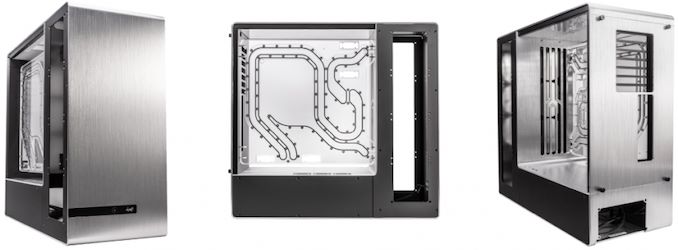
The chassis can support up to E-ATX motherboards, up to 365 mm video cards, and up to a 250 mm ATX PSU.
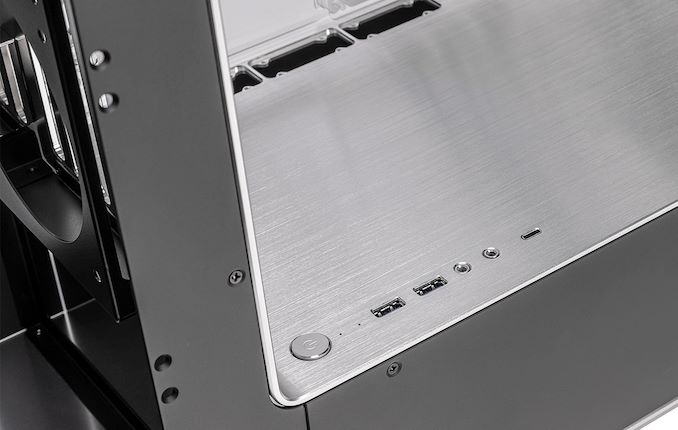
The EK-Quantum InWin 909EK is now available for pre-order from EK Webshop and will ship around the 19th of March 2020. Only 200 units will be made, and each unit will cost €1,500.
Related Reading- InWin’s Alice: A Unique Chassis Made of Fabric and Plastic
- InWin’s Signature Y?ng: A $4000 PC Case Designed by Customers
- CES 2019: $900 InWin 928 Chassis for Intel's 28-Core Xeon W-3175X
- InWin 307: How About 144 RGB LEDs on a Front Panel
Source: EKWB
More...
-
02-05-20, 01:22 PM #10310
Anandtech: Quantum to Acquire Western Digital’s ActiveScale Business
Quantum has announced that it had agreed to acquire ActiveScale object storage business from Western Digital. Western Digital’s ActiveScale cloud storage solutions are used to store unstructured data that requires massive amount of scalable storage space that is cheap, fast, and reliable. ActiveScale has not been growing at Western Digital for a while now, but it will fit quite well into Quantum’s portfolio sitting between high-performance SSD and HDD-powered storage systems and low-cost tape-based storage systems.
Today’s ActiveScale systems can store up to 57.55 PB of data that is protected using technologies like erasure coding, BitSpread, and BitDynamics. Performance wise, ActiveScale can offer up to 75 GB/s throughput in a scale-out configuration. Western Digital has been getting rid of its storage systems business for some time now as competing against such storage systems giants as Dell EMC, HPE, IBM, NetApp, and Hitachi that control over 50% of the market (according to IDC) is very hard these days. Last year the company sold off its IntelliFlash all-flash storage arrays business to DDN and said it would consider various strategic options for its ActiveScale business.
As it now transpires, Western Digital will sell its ActiveScale division to Quantum for an undisclosed sum. Quantum expects to close the transaction by March 31, 2020.
Quantum will continue to support existing ActiveScale customers and devices, though the company stresses that it acquires ActiveScale mostly because of software, technologies, and specialists. The company’s future plans include creation of object storage solutions featuring HDDs and tape.
Jamie Lerner, President and CEO, Quantum, said the following:
"As Quantum returns to a growth path, we will be evaluating strategic acquisitions that bolster our technology portfolio. Object storage software is an obvious fit with our strategy, our go-to-market focus, and within our technology portfolio. We are committed to the product, and to making ActiveScale customers successful, and we look forward to engaging with them to solve their most pressing business challenges around storing and managing unstructured data. With the addition of the engineers and scientists that developed the erasure-coded object store software, we can deliver on a robust technical roadmap, including new solutions like an object store built on a combination of disk and tape."Related Reading:
- Western Digital to Exit Storage Systems: Sells Off IntelliFlash Division
- Western Digital Roadmap Updates: Energy Assisted Recording, Multi-Stage Actuators, Zoned Storage
- Fire At Kioxia & Western Digital NAND Fab - Impact on Supply to be Minimal
Source: Quantum
More...
Thread Information
Users Browsing this Thread
There are currently 41 users browsing this thread. (0 members and 41 guests)







 Quote
Quote

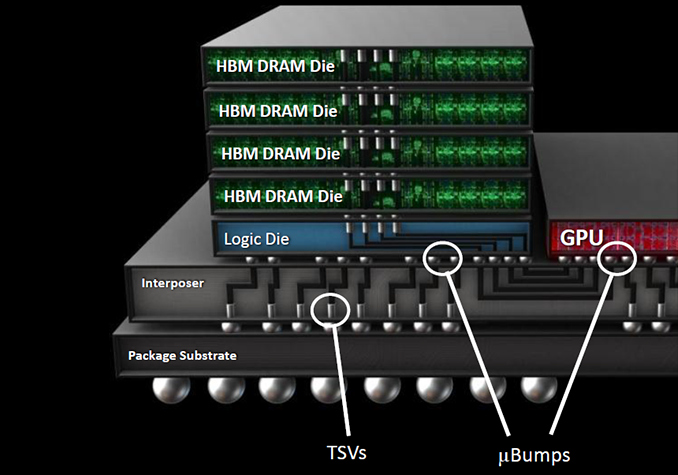
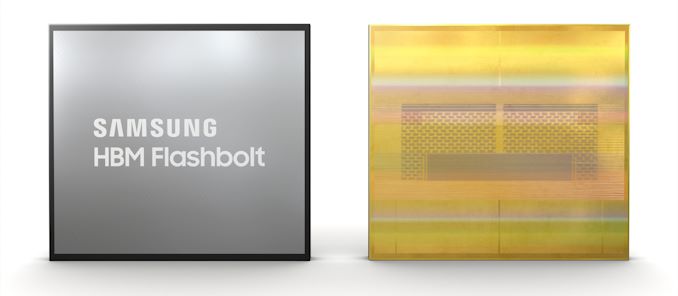


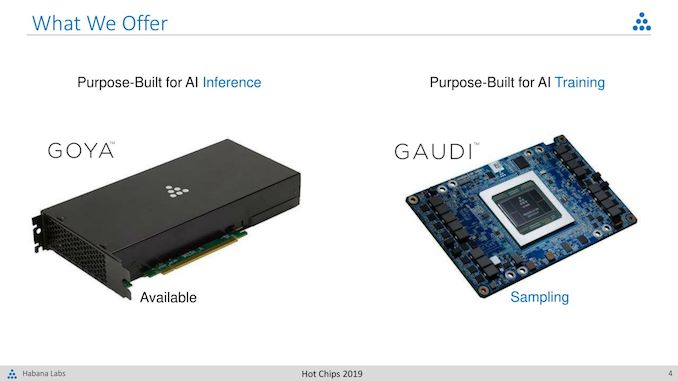
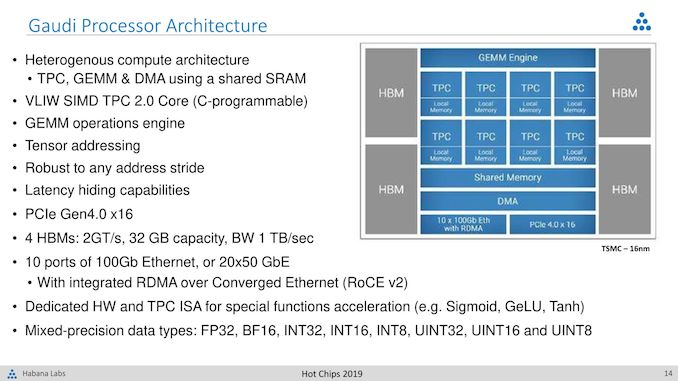
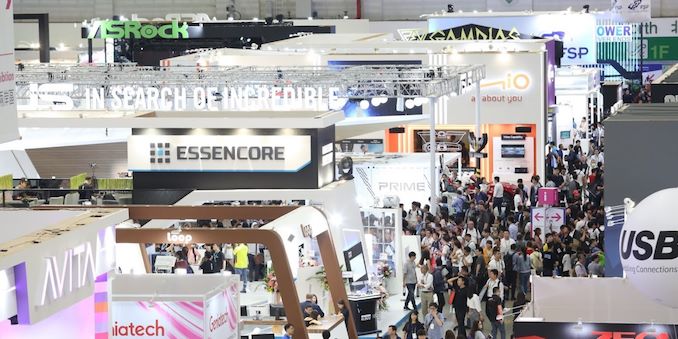
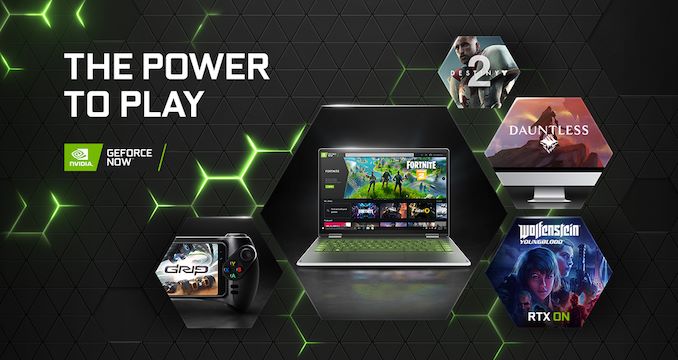

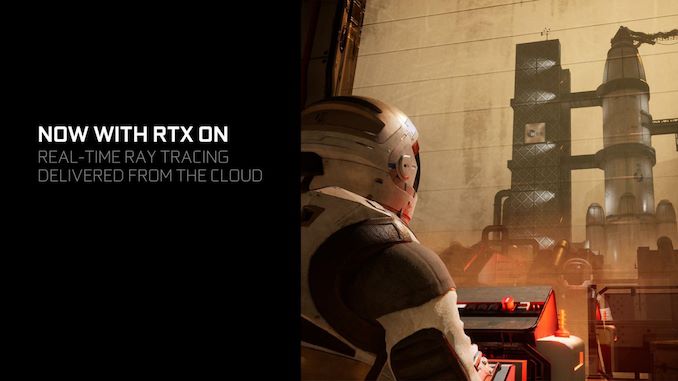
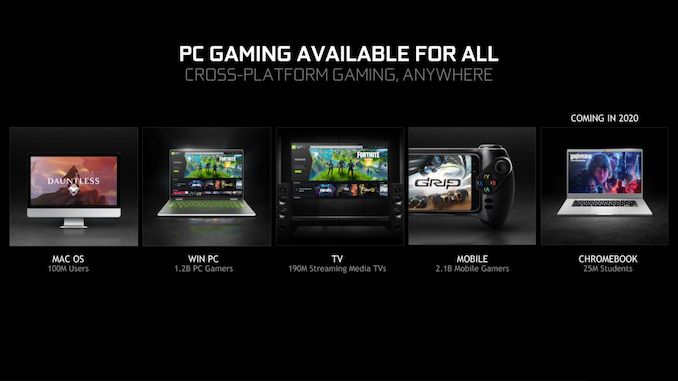
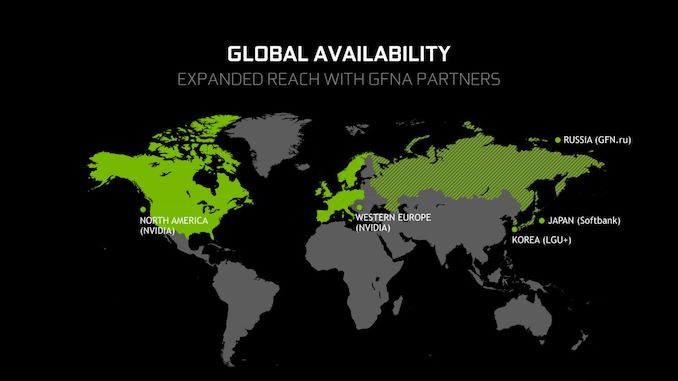
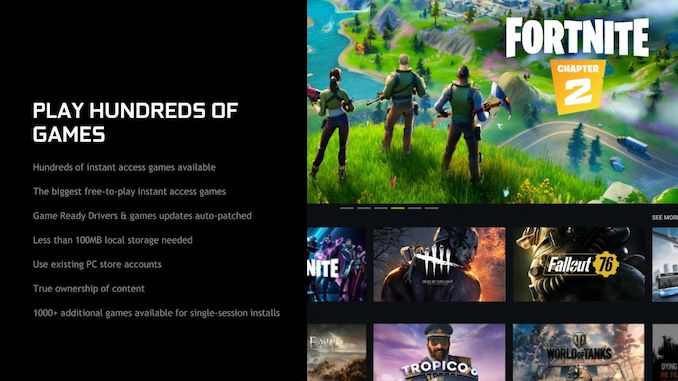

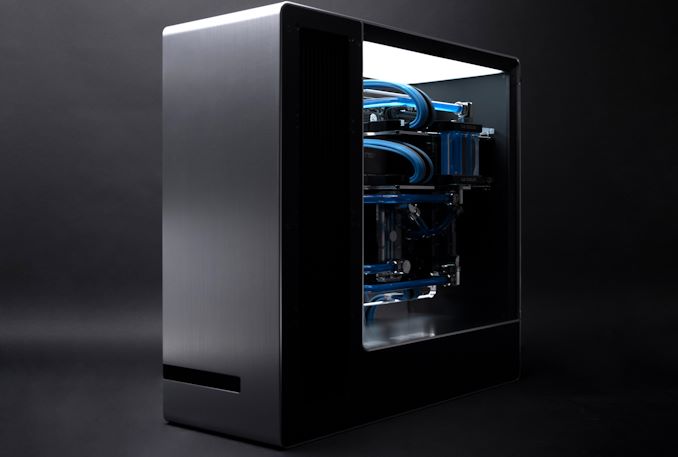
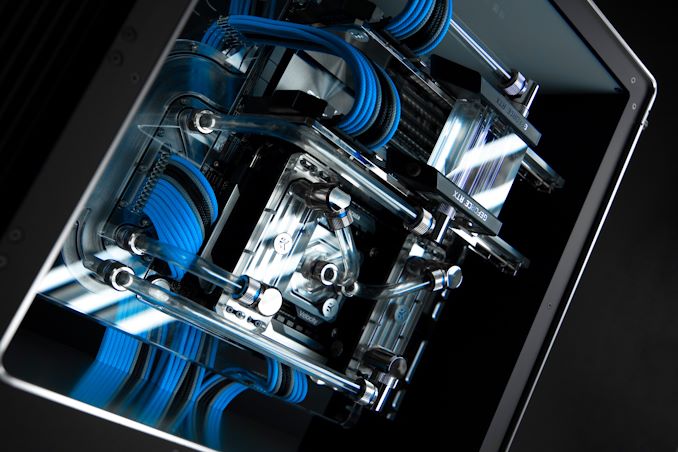
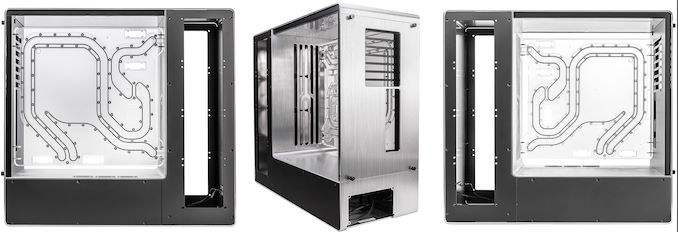


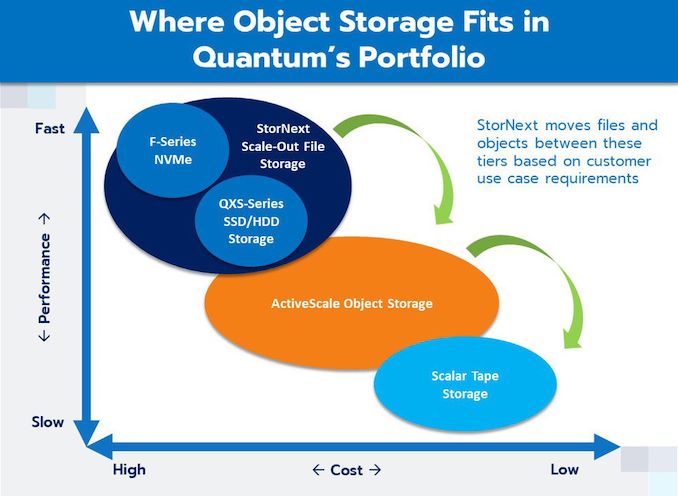
















Bookmarks